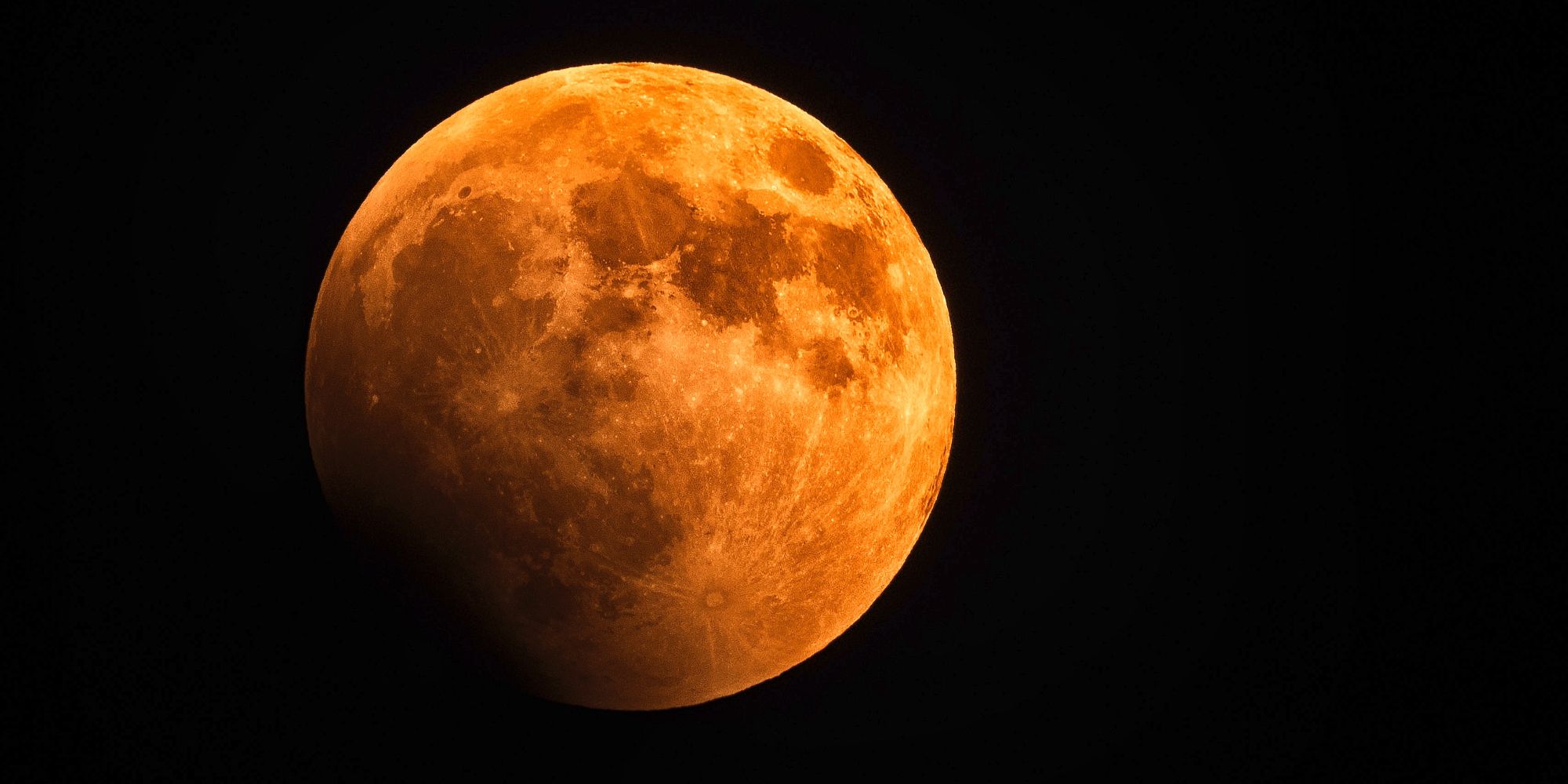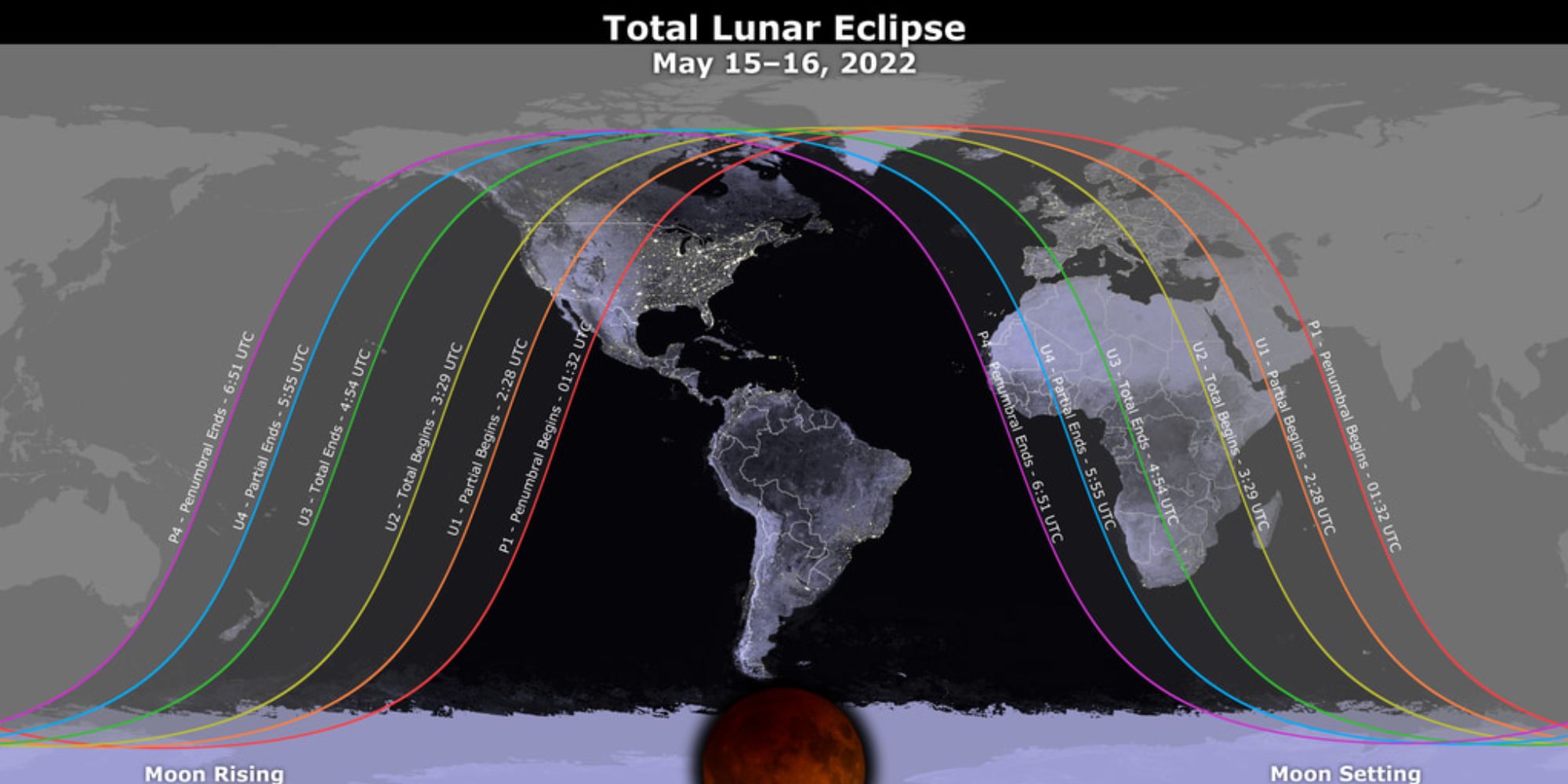A total lunar eclipse is happening this weekend, and depending on where you live in the U.S., you should have an excellent opportunity to view the entire thing. One of the most beautiful things about the Moon is how its appearance constantly changes. Any given month sees the Moon go through eight distinct phases — starting as a New Moon, eventually becoming a Full Moon, shifting to a Waning Crescent, and then repeating the process all over again. While the Moon itself doesn't change, the way it orbits Earth results in its ever-shifting appearance.
But these monthly phases aren't the only lunar activity to look forward to. About three times each year, we also get to experience a lunar eclipse. A lunar eclipse occurs when the Sun, Earth, and Moon are lined up perfectly. The Sun shines its light on Earth and causes a massive shadow on the other side of the planet. When the Moon finds itself inside that shadow, it takes on an eerie red color — giving us a lunar eclipse. Partial lunar eclipses are the most common, but around every two and a half years, the effect is cranked up to 11 with a total lunar eclipse.
And that's precisely what we have to look forward to this weekend. Starting in the evening on Sunday, May 15, and going into the morning on Monday, May 16, we'll be treated to the first lunar eclipse of 2022. And this isn't just a small partial eclipse that's easy to overlook. The lunar eclipse happening this weekend is a total lunar eclipse. The reddish color should be very apparent considering the Moon will be totally immersed in Earth's shadow, giving it the famous 'Blood Moon' name.
Tips For Watching The 2022 Blood Moon Eclipse
As with any lunar eclipse, there are various stages we'll experience over a few hours. It all starts at 9:32 PM EDT when the Moon first enters Earth's penumbra (a fancy word for the outer part of its shadow). This will cause the Moon to lose some of its brightness, but you won't see anything too drastic this early on. Bigger changes will happen at 10:27 PM EDT when the Moon enters more of Earth's shadow at takes on a partial eclipse. As NASA explains on its website, this stage will make it look like "a bit is being taken out of the lunar disk."
Where things get really exciting is at 11:29 PM EDT. This is when totality begins, marking the start of the total lunar eclipse. This is the time when the Moon should have its spooky red color and become deserving of the Blood Moon nickname. The Moon will then begin leaving Earth's shadow at 12:53 AM EDT on May 16, with the eclipse officially ending at 2:50 AM EDT.
While totality will be visible throughout most of North America, all of Central and South America, Africa, and western Europe, the best seat in the house will be the eastern United States. If you live in a state like New York, Michigan, Florida, or Virginia, you should be able to see every single stage of the eclipse. Viewing the lunar eclipse with a telescope or binoculars will provide the best view, but even if you're just looking up with your eyes, you can still expect an incredible sight.
Source: NASA


